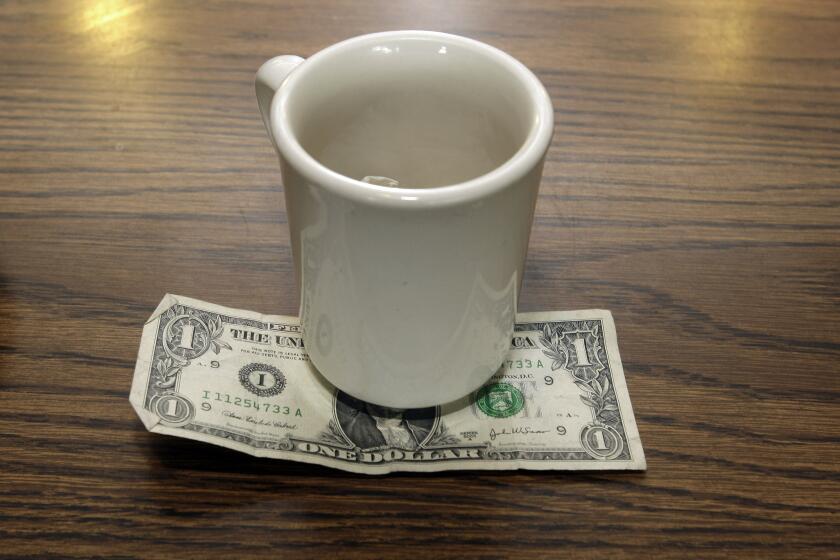Wines of the Week: California’s Alexander Valley Cabernets
- Share via
It’s worth remembering that all California Cabernet Sauvignon doesn’t come from Napa. It grows in lots of places. Where there is warm sunshine, ample heat units and obliging autumn weather, there are winemakers taking a stab at making it. Where to find it? In the warmer reaches of Paso Robles, in Santa Barbara’s Happy Canyon and other eastern Santa Ynez locales, in the Santa Cruz Mountains, in the Sierra Foothills — and, not least, the historic plantings in the valleys adjacent to Napa in Sonoma County.
Perhaps the most respected of these is the Alexander Valley, a long, narrow valley that angles north and east from Healdsburg. It too has a climate influenced by the Pacific, but the ocean breezes take a more circuitous route along the twists of the Russian River or rising from the Petaluma Gap. In its climate it is more remote, less dynamic, less subject to ocean influence, and as a result the area accumulates slightly more heat than Napa. The alluvial, well-draining soils of the valley floor are flanked on the east side by the Mayacamas mountain range, whose rise forms a benchland providing southwest exposure that’s ideal for Bordeaux varieties.
All of this may contribute to the sense that these wines have a more uniform flavor profile than Napa’s Cabernet Sauvignons.
That flavor profile is effusive for the most part, a warmth and generosity of fruit that rarely gives way to flab or rotundity; these are among the sturdiest Cabs in California, with robust tannins that counterbalance any overly forward tendencies.
It almost seems as if a cultural restraint contributes to this structural ballast as well. This is, after all, the home to many influential older brands, such as Jordan, Rodney Strong, Chateau Souverain, Clos du Bois, Robert Young, Silver Oak, Simi — all wineries with established track records, longtime customer bases and a sense of tradition —wineries, in other words, that are less beholden to Robert Parker’s critical proclivities. Their staying power lends a classicism, a steadfastness, to the valley’s offerings. (Their other great virtue would be price: Nearly all of these appellation bottlings come in at a fraction of Napa prices.)
In the early ‘90s Jackson Family Farms, Kendall Jackson’s high end portfolio of wineries, began developing in earnest some of the mountain slopes and benches that frame the valley, particularly for their brand Stonestreet, broadening the appellation profile; certainly these new vineyards, at elevations in the vicinity of 2,500 feet, are flaunting an invigorating, grippy mineral dimension for wines of exceptional palate length. The three Cabs here seem emblematic, embodying the tradition and the textural heft that are the valley’s best features:
2012 Jordan Alexander Valley Cabernet Sauvignon
There is old school flair here from Jordan, one of California’s best known, not-from-Napa Cabernet houses. An intriguingly savory wine at the outset, with scents of tobacco leaf and cedar, the cherry core of fruit here emerges with air, lean and sinewed, red-toned from start to finish, with a pronounced succulence and fine tannins. About $50, widely available.
2013 Lancaster Estate Alexander Valley Cabernet Sauvignon
Warm and deep, with scents of plum and black cherry. There’s a savory note in the background, like a drizzle of consommé, that lends complexity. The flavors are expansive, dark plum that’s slightly chewy, with a powerful tannic payload that feels almost like a spine, strong and supple at once. About $70 at Woodland Hills Wine Merchant, Vendome (various locations) and Mel & Rose, West Hollywood.
2013 Stonestreet Alexander Valley Cabernet
Stonestreet draws from Jackson Family’s dramatic benchland vineyards, some more than 2,000 feet above the valley floor — this one, from multiple elevations, might be the brand’s least structured — but not to worry, it’s got plenty of depth and grip to the textures. There’s a scent of bay leaf and cedar to go with the red plum and wild cherry flavors, a classically grippy mouthfeel, with a forresty, savory wallop of mountain tannin on the finish. About $45 at John & Pete’s, Wally’s Wines & Spirits and Woodland Hills Wine Merchant.
ALSO:
Make 2017 your best wine year ever
A behind-the-scenes look at Dry River Brewing in Boyle Heights
Jonathan Gold reviews Irenia in Santa Ana, which is reinterpreting traditional Filipino cuisine
More to Read
Eat your way across L.A.
Get our weekly Tasting Notes newsletter for reviews, news and more.
You may occasionally receive promotional content from the Los Angeles Times.










